Clinical picture of measles.
Contents of
- Measles in children: the first signs, symptoms of
- What does a measles rash look like in children?
- Diagnosis of measles in children
- Treatment of measles in children
- Is measles without temperature in children
- Do measles in vaccinated children have
- Can measles occur in children under one year old?
- How long does the measles last for children?
- Measles in children: transmission routes, incubation period
- Measles in children: nursing care
- Measles in children: complications, consequences
- Measles prevention in children: reminder
- Measles in children: inoculation
- Measles vaccination period for children
- Video: Treatmentand complications of measles in children
Korju is called a rather serious infectious disease, against which a very strong intoxication of the whole organism begins, manifested by high temperatures and a rash all over the body. Also, most infected children experience sore throat and severe coughing attacks.
A rather viable virus provokes the disease, which can calmly descend to a healthy person even on the ventilation shaft of the house. Once on the mucous, it immediately begins to multiply intensively. The most unpleasant thing is that all this time you will not even assume that your child is infected.
As a rule, they learn about the fact that their child was infected with measles by the measles only on the 9-10th day after the disease got into the body, or rather, after the body has a characteristic rash.
Measles in children: the first signs, symptoms
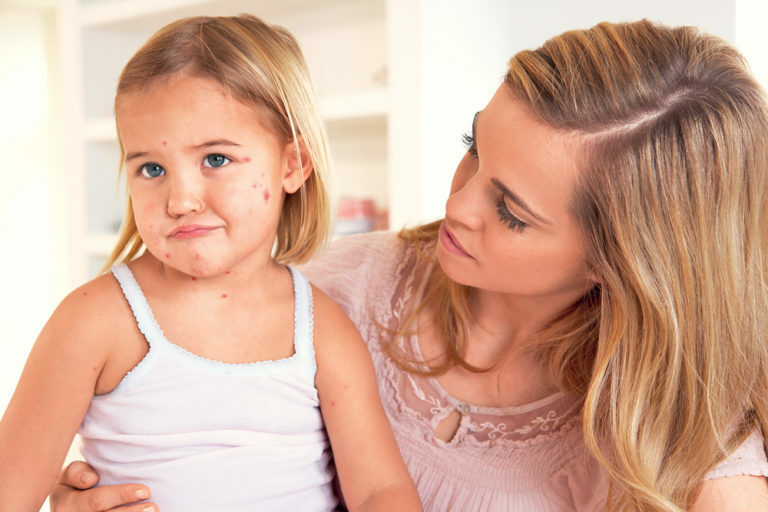 Symptoms of measles
Symptoms of measles Immediately I want to say that measles is one of the most dangerous diseases in the world, so if a child meets her pathogen, then 100% probability that he will fall ill. True, if during this period the protective forces of the body will be in good condition, then the disease will proceed less aggressively. The first signs of the disease are typical for almost all childhood colds, which is why most parents at the initial stage can treat their child from ARVI.
As a rule, measles begins with a slight increase in body temperature, which is accompanied by psychomotor agitation. The child becomes capricious, whiny, does not sleep well and refuses to eat. Thus, the baby reacts to the intoxication of the body with a virus. Approximately on day 5( in some cases and on 10) there is a rash. At first it can be quite insignificant and be located only on the face and behind the ears. But as the disease progresses, it will also increase.
Other symptoms and signs of the catarrhal period:
- Runny nose. Discharge from the nose can be yellow, that is to be purulent
- Cough .Most often, against the background of measles, there is a so-called barking cough that can cause laryngospasm
- Conjunctivitis .Eyes inflame, begin to tear and sour
- Photophobia. The child can not look at bright and bright things and all the time to squint
- Puffiness( faces) .As a rule, this problem is provoked by inflamed and enlarged lymph nodes
. How does the rash appear in children with measles?
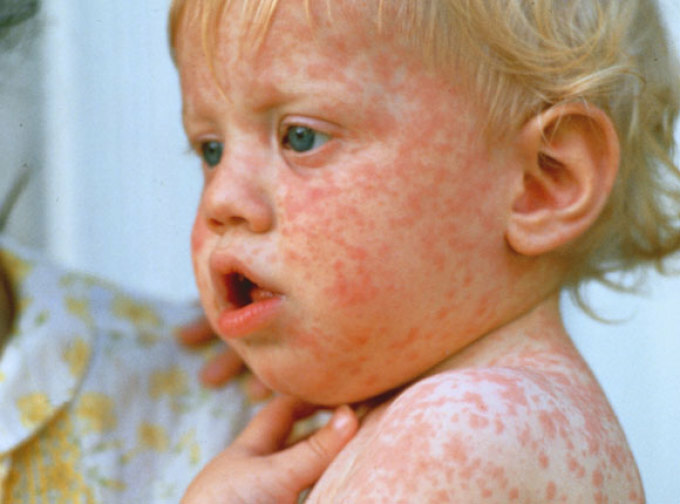 Rash with measles
Rash with measles As you probably already understand the rash is the most characteristic sign that your child has become infected with measles. Therefore, it is by its appearance that one can understand at what stage the disease is at the moment.
So:
- The first stage of .At the very beginning of the disease, there is a rash, which specialists call the spots of Velsky - Filatov. They appear in the area of the molars. Outwardly, they look like small knots of pink color, around which reddening of the skin is observed. They can be located at a distance from each other or merge into spots and form quite noticeable red foci.
- The second stage is .The rash begins to spread to the limbs and trunk of the child and at the same time to increase slightly in size. At this stage, it can reach the size of a buckwheat. At the same time, it continues to remain pink and soft to the touch, just the baby has an itch of skin.
- Third stage. At this stage, the rash begins to change its color and size. At first, the redness begins to gradually subside and light pigmentation pigmentation appears. It begins to turn blue, flatten, and then completely turn pale and disappear. However, on this background, the child can begin to have problems with skin integument. They can begin to peel and crack in places of the greatest location of the rash.
Diagnosis of measles in children
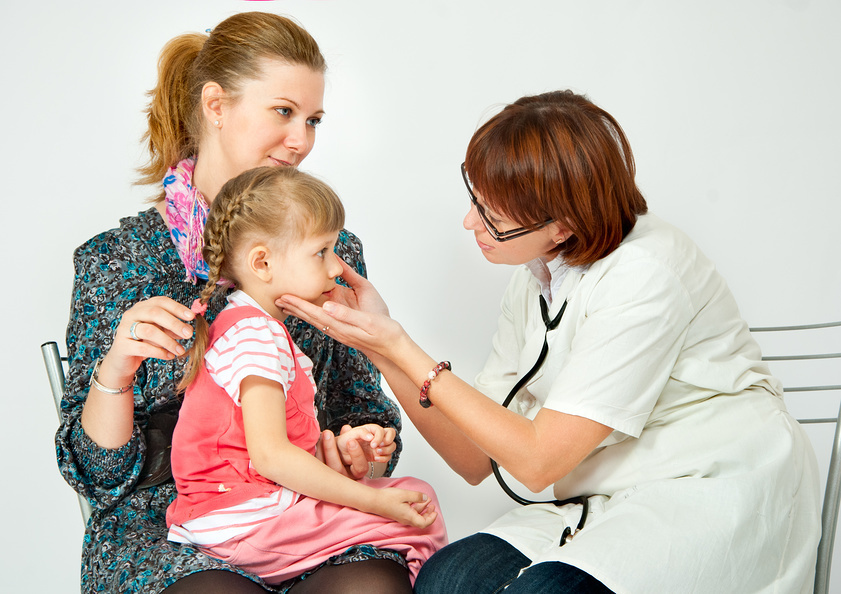 Diagnosis of measles in children
Diagnosis of measles in children In principle, the children's pediatrician treats measles, so if you suspect that your child has all the signs of this disease, then first try to call a specialist to your home. If after examining the patient the doctor decides that he needs an additional examination, he will give you a referral to the infectious disease specialist.
If you have to take your baby to the hospital, then do it at the end of the day. Typically, at this time under the cabinet is the minimum number of patients, which means that there is a possibility that your baby will not infect anyone. Yes, and do not forget that measles is quite a dangerous disease, so in crowded places, crumbs are best placed in a medical mask.
Diagnosis of measles is carried out as follows:
- The child is examined by a doctor. This measure is necessary for the specialist to see in what state the baby is.
- A blood test is taken. With its help, it is known whether there is a virus in the blood and whether antibodies are produced for its suppression.
- Urinalysis and chest X-ray. We need to see the development of complications in time.
Treatment of measles in children
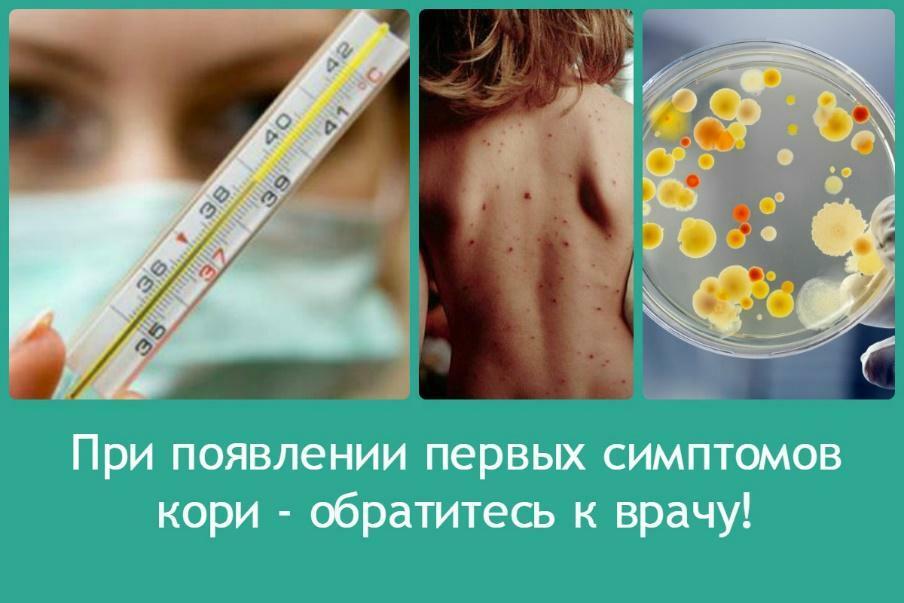 Treatment of measles in children
Treatment of measles in children In the event that measles proceeds in a standard way, a small patient is treated at home. Throughout the acute phase, the district doctor will go to the child and follow changes during the illness.
In case if the body does not cope with intoxication and complications appear, then the crumb is immediately put into the hospital, and necessarily in the infectious department. Also, inpatient treatment is indicated if the parents are unable to isolate the sick child from healthy family members.
Recommendations for treatment of measles:
- Bed rest. All the time while the disease is in the acute phase and the baby will have an increase in body temperature, full rest is shown to him. Try to make sure that at that time your baby sleeps 2 times a day.
- Wet cleaning .It should be done at least 2 times a day. This will help cleanse the air in the room and, as a consequence, reduce the amount of the virus.
- Drinking regime. It will be better if the whole period of illness your child will not drink to me 2 liters of water per day. This will contribute to the fact that the body will quickly get rid of toxins that provoke malaise.
- Medication. As a rule, in the first days of the disease absolutely all children need antipyretic drugs and antihistamines.
- Symptoms and antibiotics .Appointed only if the patient began to develop complications or, for example, a pronounced runny nose, cough, sore throat.
Is measles without temperature in children
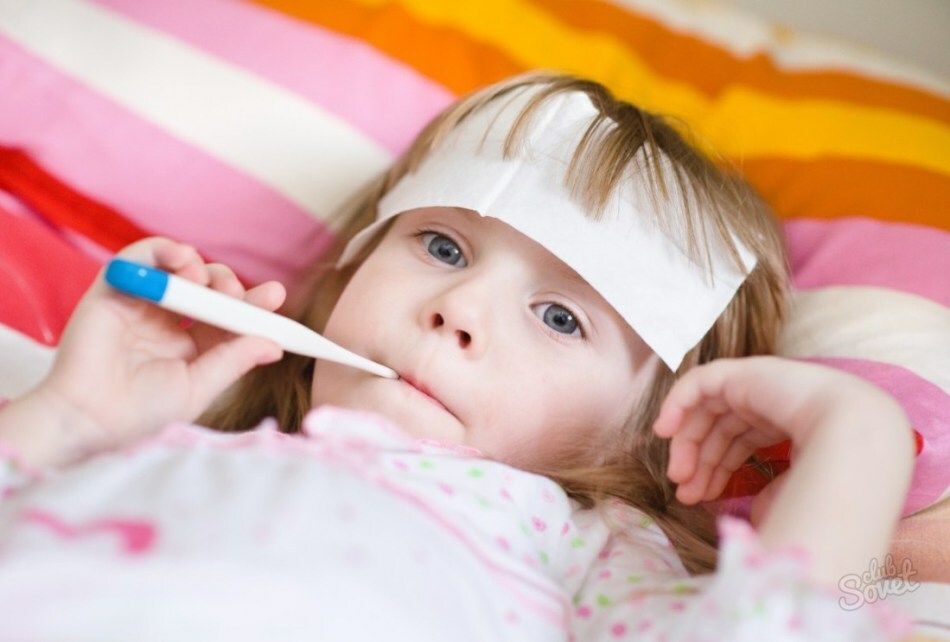 Measles without temperature in children
Measles without temperature in children If you were careful, you probably understood that the most important symptoms of measles are a characteristic rash and photophobia, all other signs are considered concomitant, that is, arising from the intoxication of the body. Therefore, to assert that with measles high fever rises in all without exception.
In the event that the immunity of the child works well, it is likely the disease will flow in a lightened form, and hence the temperature values will not increase. This is true only in cases when the body produces a large number of antibodies that block the appearance of the rash. However, the absence of temperature in the presence of other symptoms may be a bad signal.
This may indicate that the protective forces of your crumb are at zero, and the body does not perceive the virus as something alien. As a rule, later such patients develop complications that require rather complicated treatment. Therefore, if your child has all the signs of measles, but there is no temperature at all, then necessarily show it to the doctor and exclude the development of complications.
Do measles in vaccinated children have
 Measles in vaccinated children
Measles in vaccinated children If you put a similar question to the doctor, he will tell you exactly what a vaccinated child can not have measles. In fact, in this case there are exceptions to the rules. First, long-term studies have shown that 100% immunity after vaccination appears in 98% of children. The remaining 2% of the body fails and refuses to produce antibodies against measles. Therefore, if your baby is of this group of children, then it is likely that he can have measles even if you vaccinate him.
Secondly, not always our children are vaccinated with quality vaccines, which in the end can also lead to the fact that the baby will not be resistant to the virus that provokes measles. True, you must remember that in vaccinated children, it is usually less aggressive, in some cases almost asymptomatic. There can be only a mild rash without any accompanying symptoms.
Do children have measles for up to one year?
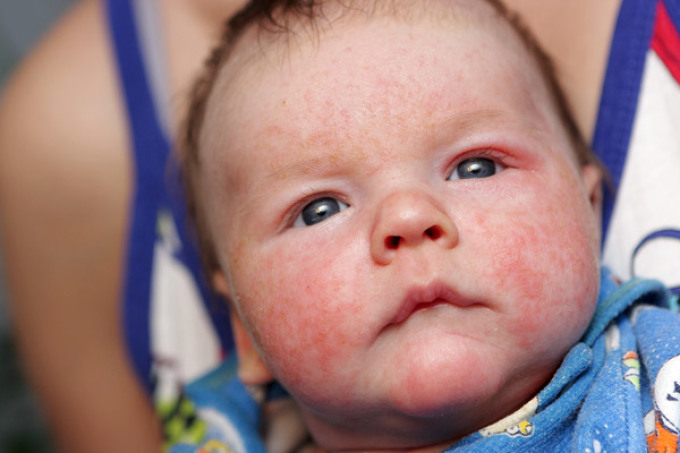 Measles in children before the year
Measles in children before the year As practice shows, newborns under the age of three months never get measles. It happens because in the womb of the mother they get immunity against the disease( if, of course, she was vaccinated or had the disease).In the fourth month of life the probability of infection with measles is increased and is approximately 2%.But most often at this age, the children still have passive immunity, which helps the body cope with the pathogenic virus.
A child can get sick with measles only if his body's defenses are greatly reduced. Starting from the seventh month the probability of infection with measles increases many times and is already 50%.Truth at this age, babies often suffer the so-called atypical measles, which proceeds very easily. That is, children can not increase temperature and rash appear in the most minimal quantities. More often than not, measles under the age of one year pass for the child imperceptibly and in most cases he sleeps quite calmly, eats and plays.
How long does the baby have measles?
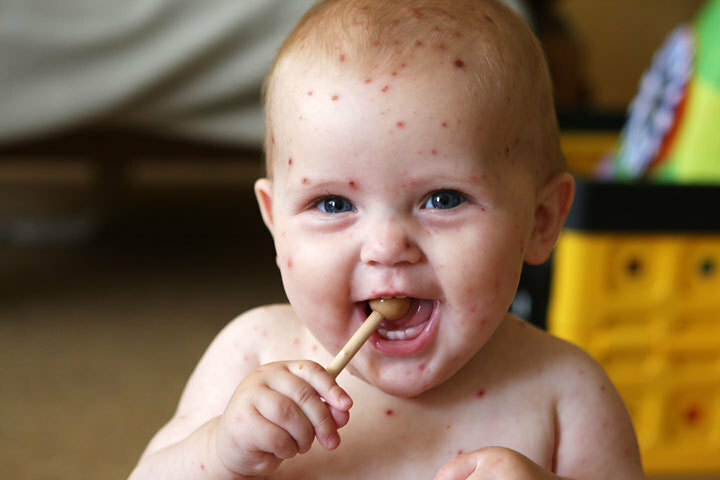 Measles in children
Measles in children Measles refers to those diseases that have a sufficiently long incubation period. Most often it lasts from 5 to 12 days, but there are times when this time interval increases to 21 days. The most unpleasant thing is that all this time a small person may not even suspect that he has caught measles. Of course, the virus will doze inside the body only until it reaches the blood and lymphatic system. And the weaker the body, the faster it will happen. At this point, you will also know that your child has measles.
On the body of your baby will begin to appear a characteristic rash, as well as cough, runny nose and fever. Most often, the rash takes another 4-7 days. First the rash appears on the face and behind the ears, then it affects the arms, legs, back and stomach, and at the very end red spots cover the places of bends and the skin between the fingers. From the seventh day from the beginning of the rash, a recovery period begins, at which time the rash begins to disappear gradually. Depending on the amount, it can take 7-10 days.
But do not think that the disappearance of the rash indicates that your child is already completely healthy. According to specialists, for two weeks the body continues to purify itself of the toxins that the measles virus developed. Therefore, during this entire period your baby will need peace and vitamin nutrition. From all this we can conclude that from the appearance of the first symptoms and until complete recovery should take at least 1 month.
Measles in children: transmission routes, incubation period
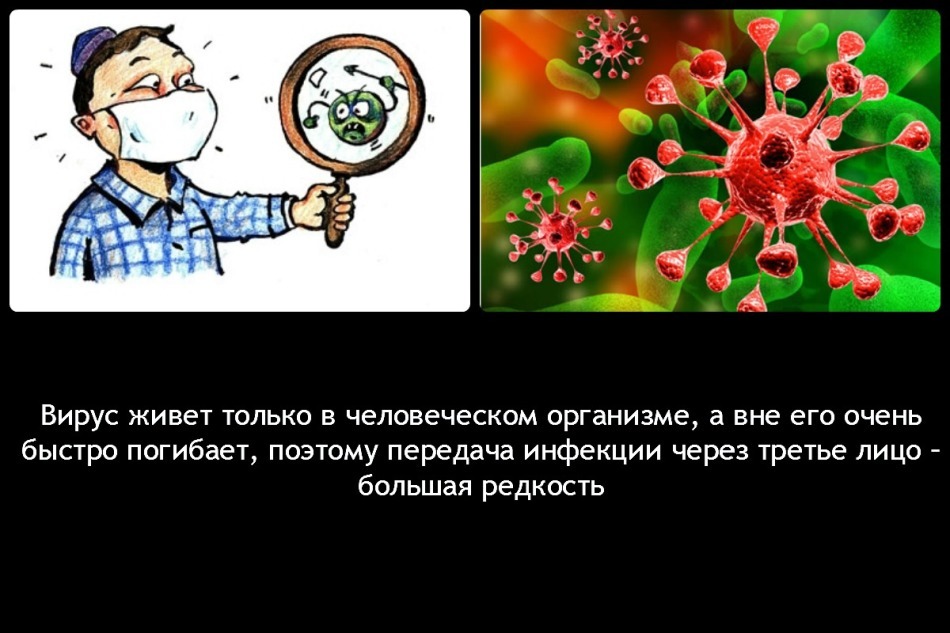 Measles in children: transmission routes
Measles in children: transmission routes As mentioned above, the incubation period can last up to 21 days. All this time, the child's organism will be intensively multiplying the virus and systematically damaging all organs and systems. Approximately 4-5 days before the appearance of visual symptoms, its concentration in the body will become so large that the child begins to infect them all those who surround it.
The measles are transmitted quite simply, during sneezing and coughing. But to catch the measles from a cup or spoon is more difficult. In order to survive the virus needs a certain environment, so under the sunlight it dies in just five minutes. In view of this, it is possible to catch measles exclusively from a sick person, and even if it comes into contact with the virus on the mucous membranes of the nose or throat.
Measles in children: nursing care
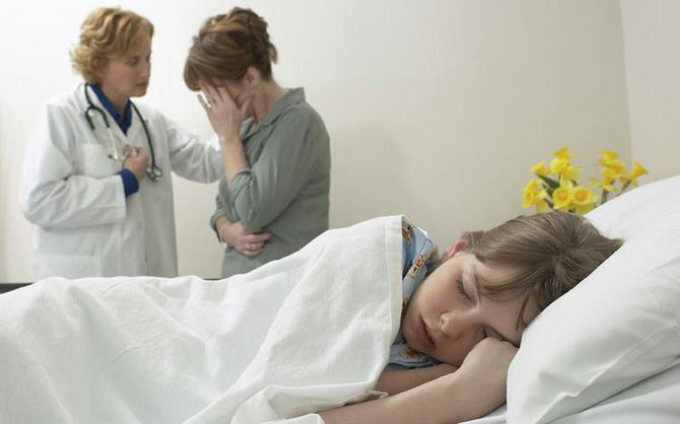 Measles in children: nursing care
Measles in children: nursing care A child who suffers from measles, even if it is quite tolerable, requires some care. You should not allow your child to lead a normal lifestyle( jumping and running) the way it can provoke the development of rather unpleasant complications. If you do everything correctly, you will help the patient recover faster, and also prevent the spread of the disease.
So:
- Alert you close and familiar patient that for a while you will not be able to contact him
- Give the patient a room in which he will spend all the time while the illness is in the acute phase of
- . Keep healthy members of the family from entering the patient's room withouta special mask
- 2-3 times a day, ventilate the room and do it in a wet cleaning
- Hang on the window curtains, which will prevent the ultraviolet from entering the room where the patient is lying
- Let the child have a light andhealthy food
- Helping your baby take care of the mucous membranes of the mouth and nose
Measles in children: complications, consequences
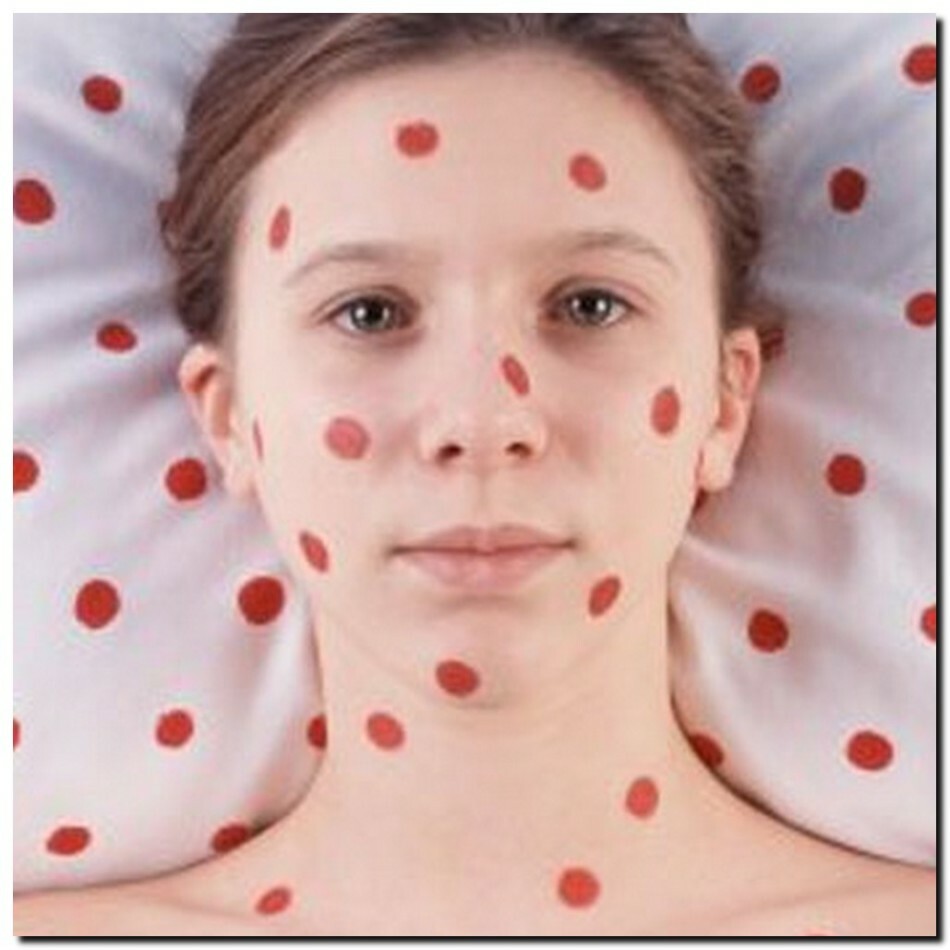 Measles in children: complications
Measles in children: complications In principle, if you do everything correctly and will help the child's organism cope with the virus, then no consequences of the disease in the childwill not be observed. During the time that the body will fight against measles, it will develop a permanent immunity to a pathogenic agent, and as a result, in the next 20-25 years your baby will not be able to worry that he will become infected again with this disease. In the event that something goes wrong, it is likely that your crumbs will develop complications that you will have to struggle with for a long time.
Complications of measles:
- Problems with the respiratory system( bronchitis, tracheitis, laryngitis, and pneumonia)
- Problems with the nervous system( inflammation of the cerebral cortex)
- Gastrointestinal problems( inflammation in the small and large intestine)
- Problems with the lymphatic system(enlargement of the lymph nodes)
Prevention of measles in children: reminder
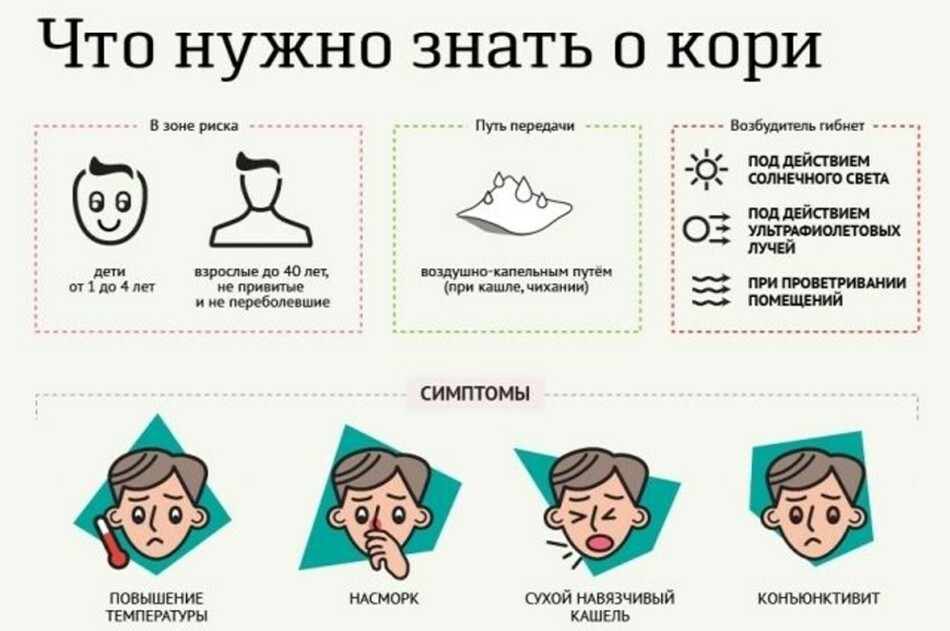 Prevention of measles in children: reminder
Prevention of measles in children: reminder Probably, it is not even worth mentioning that prevention is the most accessible method for getting the child out of possible problems. In view of this, if you want your baby to avoid infection with measles, then try to plant it.
As mentioned at the beginning of this article, this measure gives 98% guarantee that the body will be able to produce antibodies that will not give the measles virus harm to a small person.
Preventive measures in measles:
- Complete sleep
- Proper nutrition
- Regular outdoor walks
- Admission of vitamin complexes
Measles in children: inoculation with
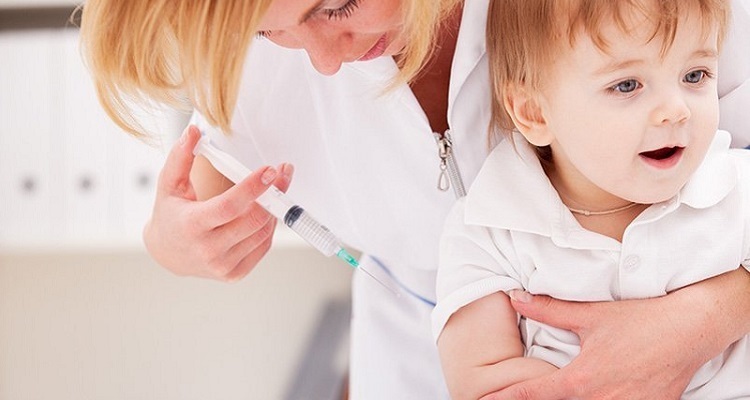 Measles in children: inoculation with
Measles in children: inoculation with As already mentioned above, the best way to protect against measles is to inoculate. Therefore, if you want to solve this problem once and for all, then simply do not put it off, immunize your child. True, you must remember that in order for this measure to bring the desired results, it must be done correctly.
So:
- During the introduction of the vaccine, your baby must be completely healthy
- Before carrying out the vaccination, it is best to pass the tests
- After the procedure, the child should not visit the crowded places
- for 2-4 days. It is advisable not to wet and rub the place where the vaccine was administered
- 5 days after vaccination, it is forbidden to give the child products capable of causing allergy
Measles vaccination period for children
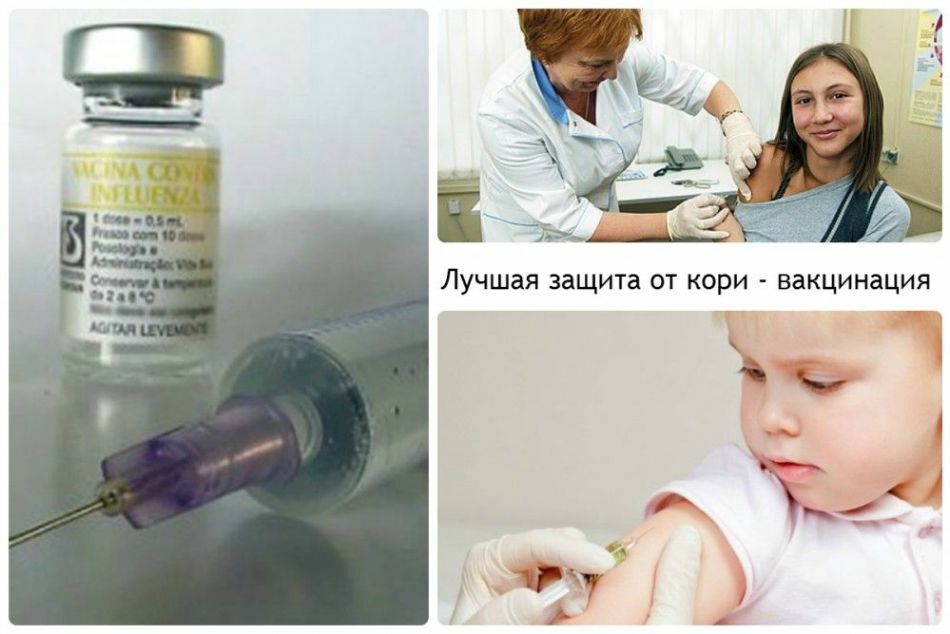 Measles vaccination period for children
Measles vaccination period for children Although vaccination is considered the most reliable methodm protection against measles, lifelong immunity, it does not. As practice shows, after about 10-15 years in the human body begins to decrease the number of antibodies and as a result, the probability of infection with an aggressive virus increases.
It is also worth considering that in order to get at least 15 years of immunity, your child should be given two inoculations, one a year, the other in six years. In case you do not re-vaccinate, there is a possibility that your baby will not be 100% protected from measles.
